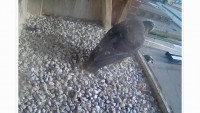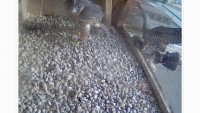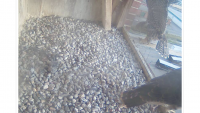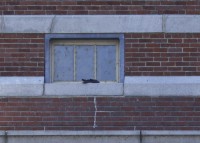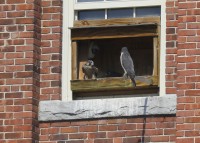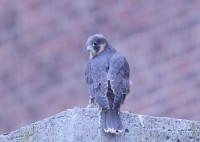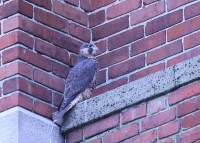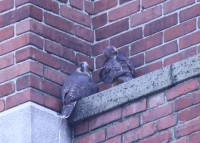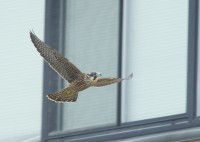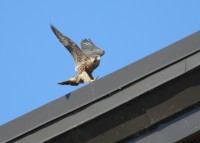Day 41: last ones fledged!!
June 23, 2018 in In the Nest Box, lawrence peregrines, Peregrine Falcons Eastern Massachusetts, Peregrine Falcons Massachusetts
Sunrise this morning was at 5:07AM. The remaining two peregrines started the day off under overcast skies, very light winds from the east and temp at 62F. The day ahead calls for overcast skies with possibility of light rain, NE winds up to 10 – 12 MPH, and temps hitting 67F by late morning, and cooling off in the afternoon.
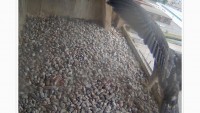 Today is looking to be a big day with number two having fledged early this morning and the last one likely to go off today. The remaining chick was seen in the nest box as late as 11AM and by 2:35PM, the nest box was empty with the last chick now fledged and out of the nest box. The web cam will continue to operate, but little chance we will see any further action through the cam. the chicks will many the next many weeks in and around the area around the Clock Tower. The chicks will be learning to fly while the parents continue to feed them.
Today is looking to be a big day with number two having fledged early this morning and the last one likely to go off today. The remaining chick was seen in the nest box as late as 11AM and by 2:35PM, the nest box was empty with the last chick now fledged and out of the nest box. The web cam will continue to operate, but little chance we will see any further action through the cam. the chicks will many the next many weeks in and around the area around the Clock Tower. The chicks will be learning to fly while the parents continue to feed them.
The young falcon, as it launches into the world, is a most handsome bird, and when the last vestiges of down are shed from the head, it has the regal appearance of the adult. The eyes have by now, taken on that extraordinary quality of lustrous vitality and intense watchfulness that even the best paintings cannot capture in its fullness.
Literature cited:
Ratcliffe, D. 1993. The Peregrine Falcon. 2nd ed. Carlton, England: T. and A. D. Poyser.
